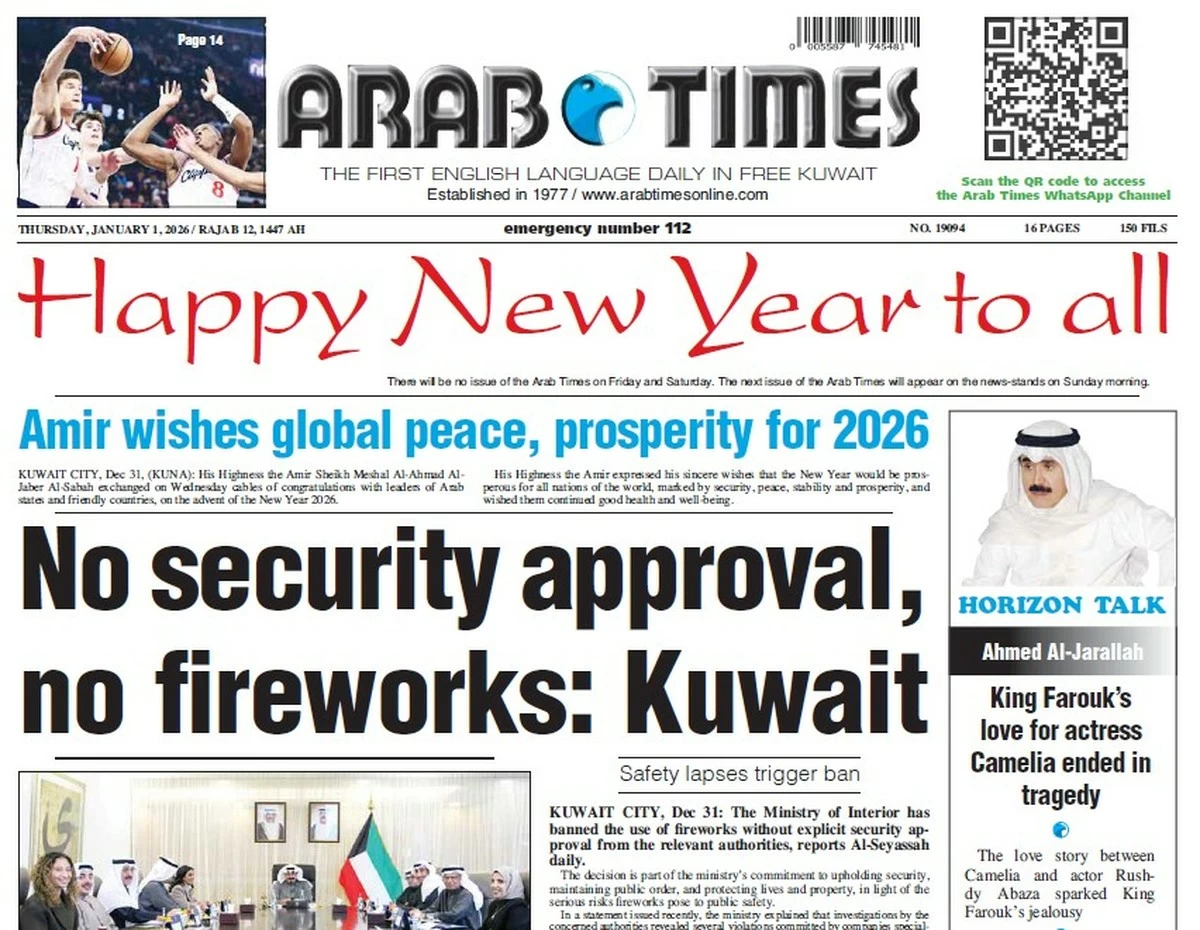01/08/2025
01/08/2025
From the first breath I took in Luoyang, which is nestled in the heart of Henan Province, China, I knew this journey would not just fill my notebook — it would fill my senses. By the time our coach eased off the highway and into this ancient capital, the air itself seemed to hum with expectation. The sunlight glided across tiled rooftops as if intent on illuminating the city’s stories, old and new.
Before the sightseeing, before the deep dives into history, before even the legendary dishes were set before us, Luoyang’s welcome arrived — genuine and dazzling. The true gift of Luoyang is its people: everywhere I looked, their faces greeted us with unguarded warmth. Laughter mingled with the aroma of tea. The city’s spirit was right there in the open, not something locked away in museums, but alive in every handshake, every shared grin.
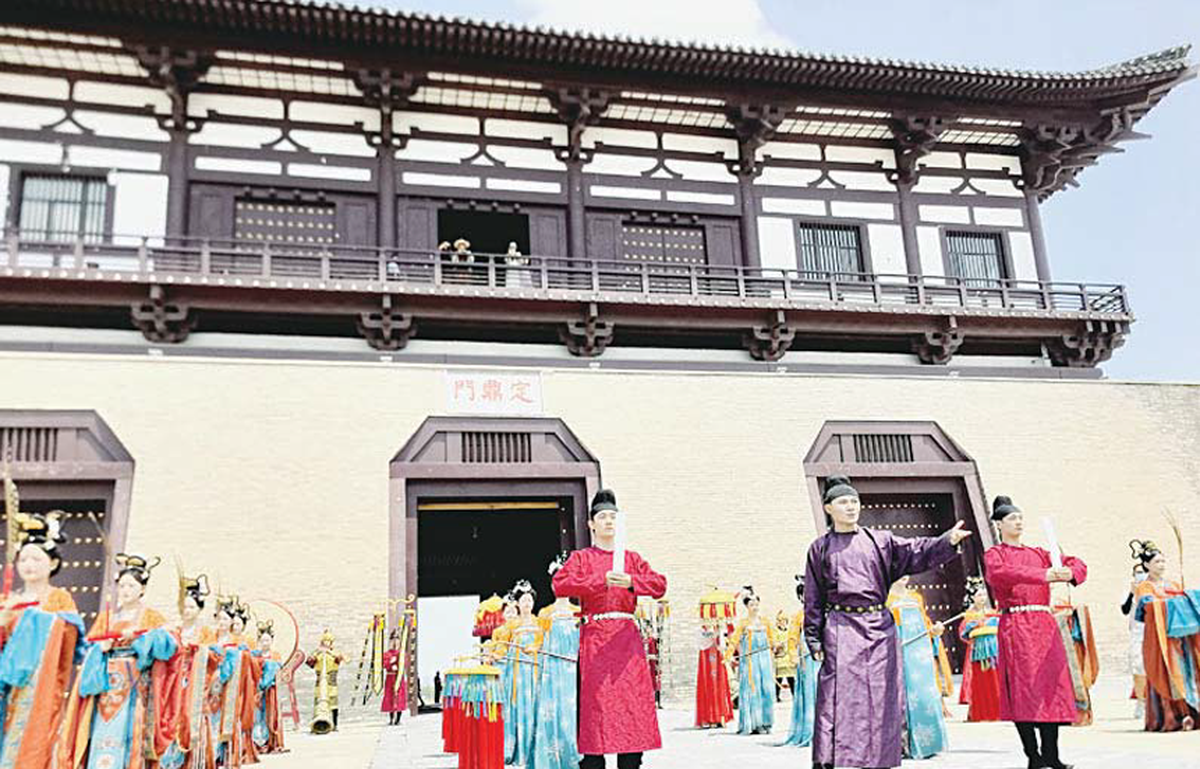
Delegates explore the historic Dingding Gate Museum, immersing themselves in the rich cultural heritage and ancient legacy of Luoyang
Our first stop, as part of the unforgettable Shanghai Cooperation Organization Media and Think Tank Summit, was the Dingding Gate Museum. Standing at the southern entrance that once welcomed emperors and merchants, I ran my hand over rugged flagstones, imagined horses’ hooves clicking across centuries-old paths, and felt the hum of life that once pulsed here. The restored Tang Dynasty towers rose sharply above us, their wooden beams shining like gold in the sunlight, as if eager to tell their stories again.
The past whispered in every corner — caravans approaching, silks rustling, voices mingling in marketplaces — memories etched deep in the stones and soil. This wasn’t just a relic; it was the beating heart of a world long gone but never forgotten.
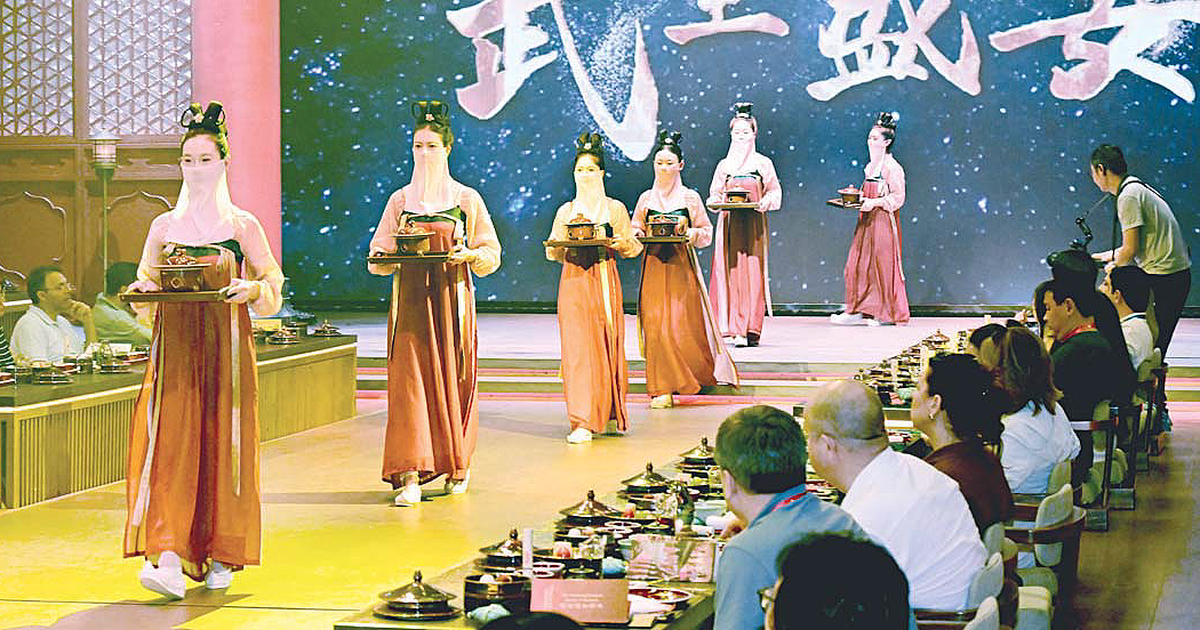
A royal feast fit for emperors — delegates indulge in an array of traditional Chinese dishes served at the elegant Wuhuang Banquet, capturing the flavors of Luoyang’s imperial past
A banquet of hospitality begins
From the gate of power, we traveled into the heart of Tang dynasty opulence. Wuhuang Banquet set a new gold standard for welcomes. As we walked into a hall dressed in crimson and silk, time felt fluid; this could have been the Tang Dynasty, or yesterday, or some magical blend of both. Conversations faded to a hush as Mayor Zhang Yujie and Deputy Mayor Ren Lijun stepped forward. They didn’t merely recite official greetings — they welcomed us as guests, as fellow storytellers, as friends. Their pride sparkled in every word, but so did gratitude, as though we were an integral part of Luoyang’s ongoing legend. It wasn’t a podium moment — it was a human one, warm and profoundly sincere.
Then the spectacle began: plates appeared, each a sensory story in itself. Golden Plate Braised Carp, glossy and aromatic, broke apart gently under my chopsticks, releasing a perfume of ginger and sweet soy. Di Gong Bafang Pot steamed from the center of the table, its broth swirling with green onions, goji berries, and earthy mushrooms. The flavors were richly layered — salty, sweet, a hint of fire — and each was matched by the traditional music, the rustle of silk robes, and the hypnotic rhythm of servers gliding by.
Held in a lavishly decorated hall, this afternoon feast was no ordinary lunch. It was a mesmerizing performance of taste, sound, and spectacle dedicated to Wu Zetian, China’s only female emperor. Holograms shimmered with her story, dancers floated through the hall like calligraphy come to life, and every dish told a tale.
I could almost feel the triumphant pulse of a dynasty’s festival running through my feet, as though history rose up from the floorboards. The lunch stretched on, unrushed — the kind of meal where conversation lingers, and every new dish is a cause for celebration.
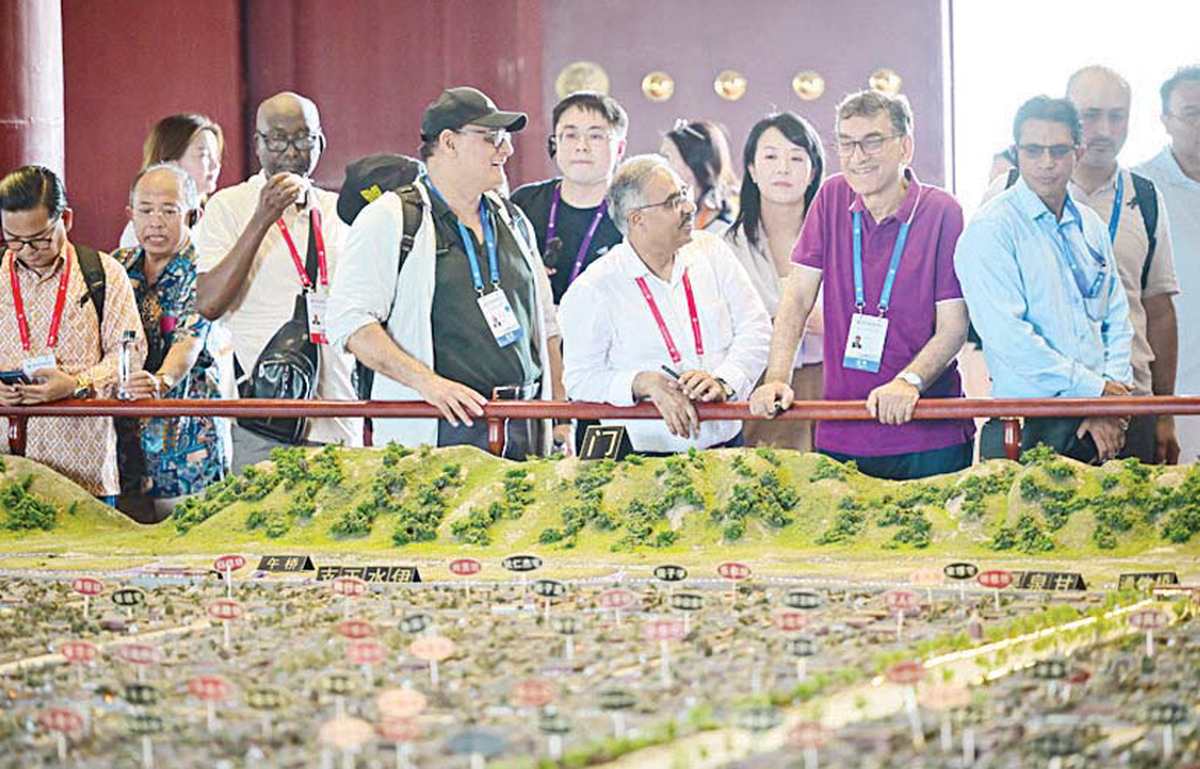
Delegates explore the historic Dingding Gate Museum, immersing themselves in the rich cultural heritage and ancient legacy of Luoyang
Muscle and innovation: The heartbeat of YTO Group
Back outside, Luoyang’s history yielded to its modern pulse.
Luoyang is not just about relics and ruins — it’s an industrial powerhouse. Nowhere is this more evident than at YTO Group Corporation, China’s first tractor manufacturer, founded in 1955.
It was here that the first “Dongfanghong” crawler tractor was born in 1958. Today, YTO leads China’s agricultural machinery sector with advanced tractors, harvesters, diesel engines, and transmission systems. With over 3.87 million tractors and 3.57 million power machines produced, its reach spans more than 90 countries.
YTO’s modern offerings — including driverless, hybrid, CVT, and hill-climbing tractors — showcase the technological leap Luoyang has made. It’s a testament to how this city builds not just monuments, but momentum.
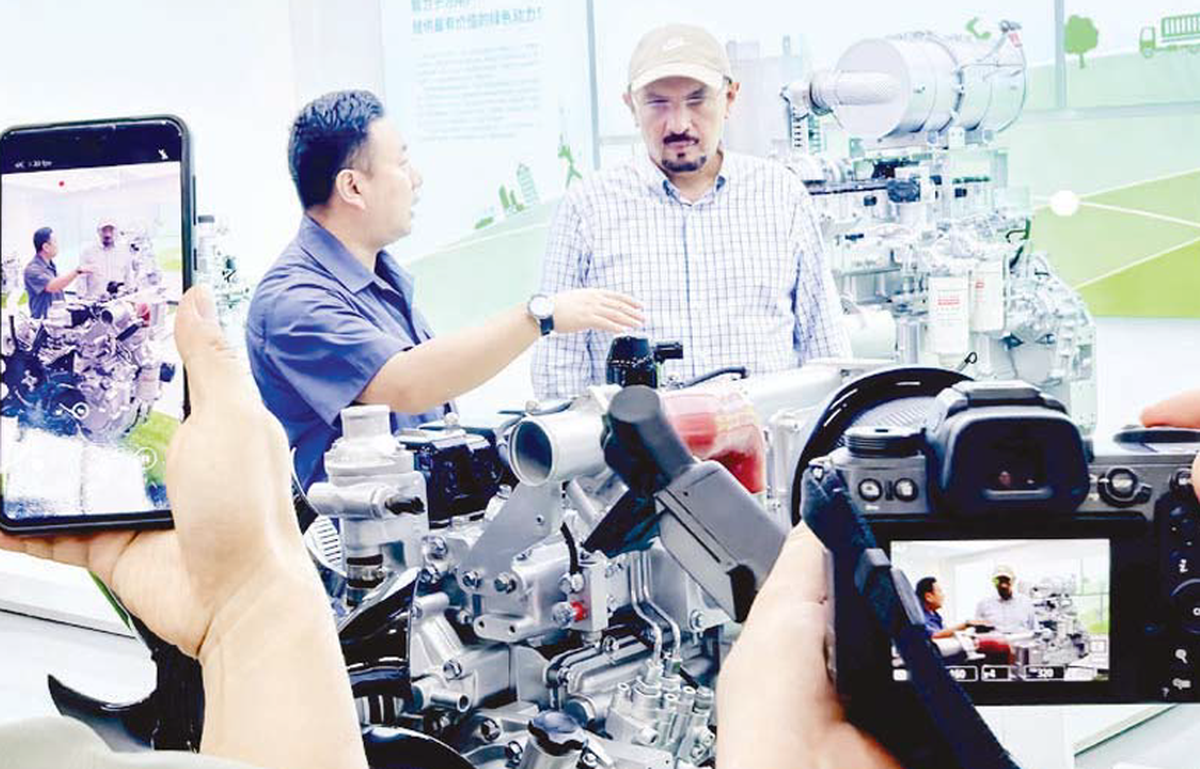
His Excellency Jassem Al-Najem, Ambassador of the State of Kuwait to the People’s Republic of China, listens to a briefing during the official delegation’s tour of YTO Group.
The future here is not a cold abstraction but something you can reach out and grasp — hot, solid, alive in your hands.
Innovation powerhouse: Where science and industry intersect
Luoyang’s vision stretches far beyond agriculture. With 3,949 innovation platforms and nearly 450,000 technicians, including three academicians from China’s top science academies, the city is a hub of forward-looking research.
As part of the Zhengzhou-Luoyang-Xinxiang National Innovation Demonstration Zone, Luoyang is advancing in aerospace, new materials, and electronic information. It houses 108 national-level innovation platforms and has made significant contributions to China’s national development strategies.
Nature’s embrace and strategic location
Beyond its industries, Luoyang thrives on natural beauty. With its forest coverage reaching 46.27%, and 68 major scenic spots, the city offers a lush escape from the steel and stone of industry. It is renowned for the Luoyang peony, a national symbol of wealth and elegance, attracting millions during its blooming season.
Beneath its mountains lie rich mineral reserves, including one of the world’s largest molybdenum deposits, a key global resource.
A transport crossroads since antiquity
Known since ancient times as “the crossroads of China,” Luoyang still lives up to its title. Major railways and expressways intersect here, and though we arrived by tourist bus, the city is well-connected by high-speed rail, subways, and an airport with routes to 15 cities. Infrastructure development is fast and modern — a perfect blend of accessibility and progress.
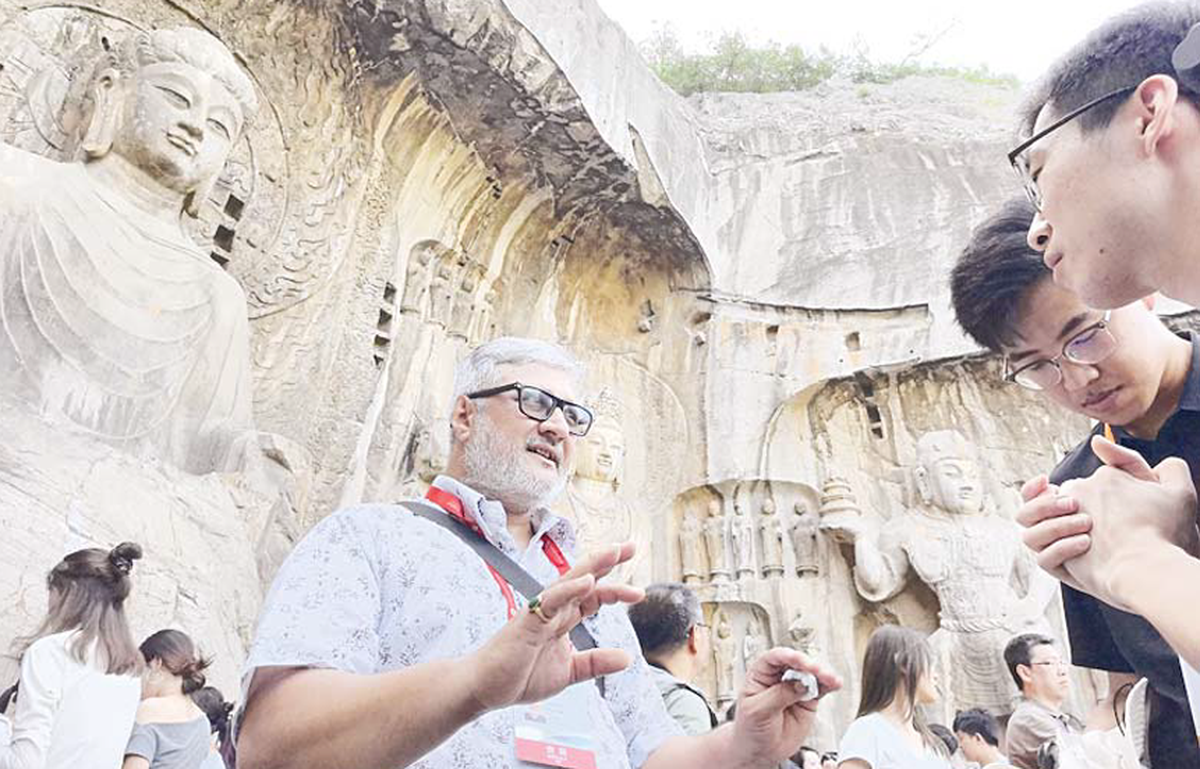
Exploring the timeless artistry and rich heritage of the Longmen Grottoes — where history is carved in stone and stories echo through the ages
Longmen Grottoes: A spiritual stone symphony
At day’s end, I stood before the mighty cliffs of the Longmen Grottoes. Here, you touch stone and it returns warmth — an ancient heat shaped by artisans’ hands, by centuries of devotion. Over 100,000 statues are tucked into caverns and niches: from the massive 17-meter Vairocana Buddha, more serene than the moon, to tiny figures etched delicately as grains of rice.
Close your eyes and the rhythm of chisel and mallet nearly echoes in the hollow space, mingling with wind and the hush from the Yi River. You almost feel the memory of incense, the weight of prayers, and the soft brush of travelers’ hands tracing the same stone a thousand years ago.
A goodbye that lingers
As our bus finally rolled out of Luoyang, dusk painted the skyline with hues borrowed from peonies and lanterns. I tasted the city on my lips — sweet, savory, smoky, alive. I felt the press of ancient stone on my skin, the ghost of laughter echoing in my ears, and the Mayor’s warm welcome still settled on my heart. Luoyang had embraced me not as a tourist, but as a guest, perhaps even as temporary kin.
If you ever come to Luoyang, bring more than your camera. Bring your appetite, your curiosity, your willingness to be still and feel. Because here, history isn’t framed on a wall — it’s handed to you, piping hot and fragrant, with a smile so genuine it makes you forget you’re new.
In Luoyang, the past has flavor, the present has heart, and the future — like the best meal — always promises one more course, one more story, one more reason to stay just a little longer.
And for me, as a journalist and a traveler, I can say this with certainty:
The story was absolutely worth the trip.
By Marlon Aquino Malinao
Managing Editor, Arab Times

